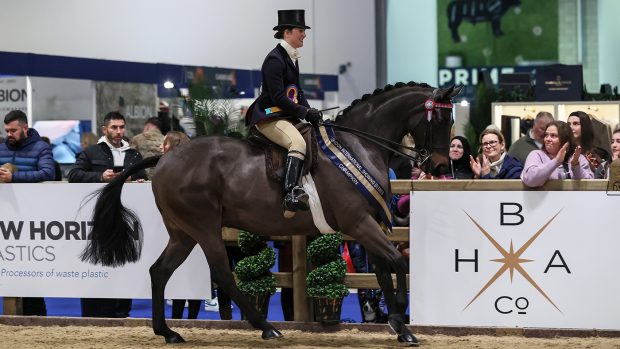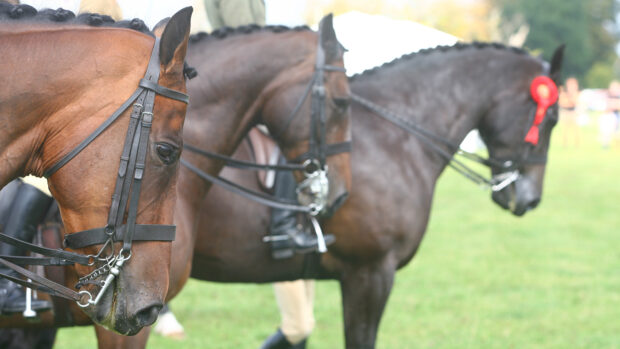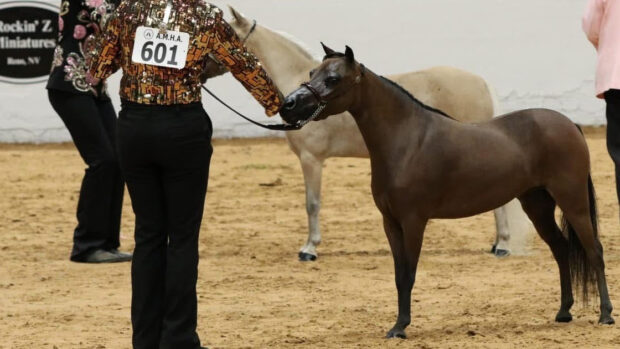The British Show Pony Society (BSPS) has reminded judges of the importance of using a full range of marks when using a 50/50 scoring system in judging flat classes.
Although it was confirmed at the BSPS judges’ conference and AGM on 5 February that BSPS classes, including Royal International Horse Show (RIHS) qualifiers, will continue to be judged without marks, the society noted that Horse of the Year Show (HOYS) qualifiers will continue to use marks and that judges should endeavour to use the below guidance when awarding marks for separate conformation/type and performance sections.
50/50 — perfect (show/conformation)
44 — excellent
38 — very good
32 — well above average
25 — average
19 — well below average
13 — poor
0 — lame/did not perform
BSPS chairman Paul Cook confirmed that if a judge is awarding an animal over 44 marks, that it should be near “exceptional” in all ways, and that 25 should be awarded to an “average show”.
Judges were also asked to consider how they would judge large classes, both on their own and with a co-judge, professionally and under time constraints without marks.
Judges confirmed the importance of the pull-in as well as good stewards and ring procedure.
Long-standing BSPS board member Nigel Hollings asked whether it is time to revert to a front and a back line, so if a judge is working alone they would only strip a certain number of ponies.
BSPS vice-chairman Joanne Pybus said when judges are officiating together that it is worth making contact beforehand so they know how they are going to judge the class rather than “making it up as you go along.”
There was some discussion over whether ride or conformation should be given precedence when making tough calls while judging.
Edward Young said: “If there was a compromise to be made I would give precedence to performance in a children’s pony class, though I would give precedence to breed type and conformation in M&M classes.”
Paul Cook gave judges a summarised guide on how to judge without marks.
“It’s good to make contact with a judge before the show to decide how you’re going to judge a class which you can then discuss with your ring steward once you get to the show,” he said. “Pulling animals in line in order of preference is strongly advised as it places importance on performance and is visual for spectators.
“Judges can have an aide-memoire, either noted by themselves or with help from a steward, though these are to remain confidential and are not to be published.
“At the end of the class it’s recommended to have a final walk round so you have the opportunity to make a final decision and aid the showmanship of the riders.
“When it comes to stripping ponies, if there are two judges, each exhibit should be stripped. If you are judging on your own it’s up to you to decide if you strip each animal.
“It’s important to give and take a little and have respect when co-judging. I would be disappointed if we needed to bring in a referee to make a final decision, though I appreciate this is different for a championship or supreme.”
You might also be interested in:

BSPS revokes M&M working hunter ruling following competitor reaction
Showing 2019 nostalgia: best of June — a judge awards zero marks, Cuddy contenders shine and why a failed wedding was the best thing to happen to one rider
At Royal Three Counties, the ridden heavy horse qualifier caused much discussion after four horses were given a zero mark

Subscribe to Horse & Hound magazine today – and enjoy unlimited website access all year round
Horse & Hound magazine, out every Thursday, is packed with all the latest news and reports, as well as interviews, specials, nostalgia, vet and training advice. Find how you can enjoy the magazine delivered to your door every week, plus options to upgrade your subscription to access our online service that brings you breaking news and reports as well as other benefits.





